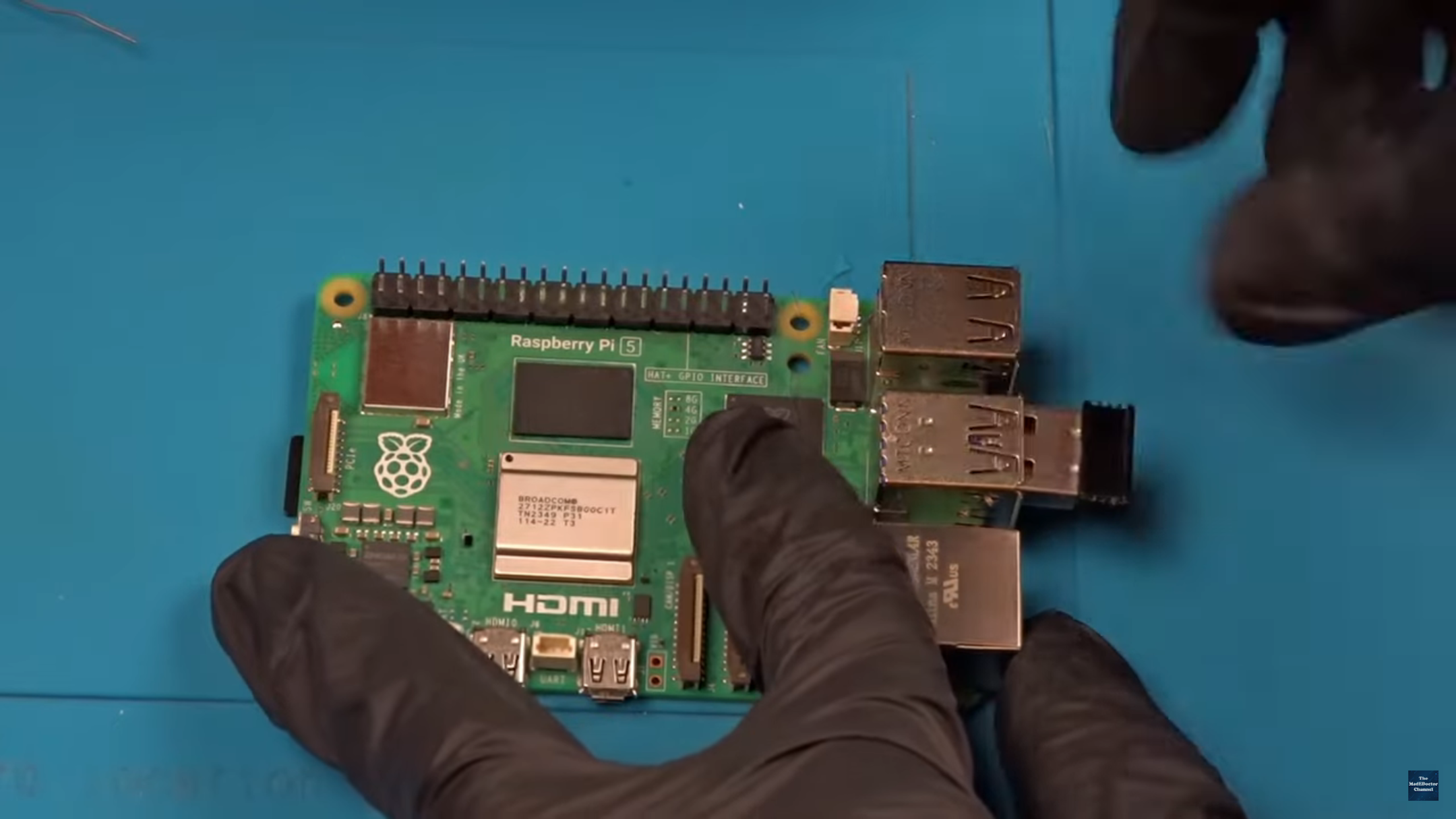Wasn’t necessarily suggesting 11 LTSC; just my personal choice.
data1701d (He/Him)
“Life forms. You precious little lifeforms. You tiny little lifeforms. Where are you?”
- Lt. Cmdr Data, Star Trek: Generations
- 9 Posts
- 428 Comments
Not really.
Ampere’s for servers; if you have the cash to blow, you can get a fancy workstation, but not a laptop. It’s really a shame; I think Ampere might be able to do well in the consumer CPU market if they wanted to face Qualcomm (and assuming they can get their single core performance up). A lot of their hardware seems to follow standards pretty well.
Graviton is only used internally inside Amazon and not sold to customers.
The only semi-decent ARM laptops you can get right now are Snapdragon ones, some of which kind of support Linux but with a lot of caveats and obnoxious quarks.
I have to have Windows for my university’s test-taking spyware, so I just have a barebones 11 LTSC installed on a secondary drive.

 12·5 天前
12·5 天前I just looked it up, and it seems a lot of the pre-Apple Silicon MacBook had swappable airport cards that used a completely standard mini PCIE slot. From a cursory google search, it looks completely possible to swap in something like an Intel Wi-Fi card that is supported natively by the kernel.
A mini-PCIE Wi-Fi modem can be had for not too expensive, around the $30 range; in fact, if you have a good stack of old Wintel laptops, one of those might have a card that works well. In fact, I did that with my sister‘s laptop (although she was using Windowd) – her Realtek Wi-Fi card was causing endless misery, so I ripped the Intel modem out of an ultra book from circa 2016 and put it in her laptop. No more issues.

 10·6 天前
10·6 天前Exactly. Luckily, back in high school, my IB History class spent a good couple months just learning about authoritarian rulers and their tactics.
I especially like pulling out Pinochet because he’s a clear and relatively recent example of right wing authoritarianism, manipulation of existing religious structures, and US government support of authoritarian regimes that help contextualize its trend towards authoritarianism.

 3·12 天前
3·12 天前I mean, I had an uncle showing me HTML at 7 (not a programming language, but still). I learned basic JS on Khan Academy at 11, and if I’d known it had existed earlier, I would have started earlier.

 1·17 天前
1·17 天前That’s pretty normal for most UEFI x86_64 things up to 2020 or so.

 121·19 天前
121·19 天前UEFI first became common on new computers in 2011-2012, so I don’t a lot of 2014 computers were BIOS.
I have a cheapo laptop from 2012 (one of last Gateways) and it’s a UEFI machine.
At this point, I think 15 years ago is a more realistic estimate for the last legacy BIOS machines - my Win7 box with a 1st gen i5 is legacy BIOS.

 2·29 天前
2·29 天前Mostly, he uses Photoshop for printing, though, and I don’t know if Krita has as powerful a printing dialog.

 3·29 天前
3·29 天前My grandfather asked me about Linux, but unfortunately, he’s still using Photoshop for now.
+1 for Clevis. I’ve been using it on my laptop for a year and it works like a charm. Sometimes, you need to update bindings after kernel updates, but it’s overall quite smooth.

 2·1 个月前
2·1 个月前From what I’ve heard, ROCm may be finally getting out of its infancy; at the very least, I think by the time we get something useful, local, and ethical, it will be pretty well-developed.
Honestly, though, I’m in the same boat as you and actively try to avoid most AI stuff on my laptop. The only “AI” thing I use is I occasionally do an image upscale. I find it kind of useless on photos, but it’s sometimes helpful when doing vector traces on bitmap graphics with flat colors; Inkscape’s results aren’t always good with lower resolution images, so putting that specific kind of graphic through “cartoon mode” upscales sometimes improves results dramatically for me.
Of course, I don’t have GPU ML acceleration, so it just runs on the CPU; it’s a bit slow, but still less than 10 minutes.

 511·1 个月前
511·1 个月前I feel like most people who use Nvidia on Linux just got their machine before they were Linux users, with a small subset for ML stuff.
Honestly, I hear ROCm may finally be getting less horrible, is getting wider distro support, and supports more GPUs than it used to, so I really hope AMD will become as livable ML dev platform as it is a desktop GPU.
Oh yeh. I heard that, just forgot. Thanks for reminding me.
At this point, I’d wonder if some of the older Microsoft Surfaces might be suitable for this purpose. Especially if it’s just displaying photos, you probably wouldn’t even need the Linux-Surface kernel for a lot of things and could just run mainline, avoiding a lot of misery. For instance, a 1st gen Surface Go from 2018 seems to run for ~$70 on eBay these days; I own one and used to daily-drive it on both Windows and Linux, and although there were some annoyances, the display is decent.
Though honestly, I wonder if you particularly need a Linux tablet at all. There are dedicated digital frame devices out there for displaying photos; a lot of them can just display off a USB drive or SD card in the ballpark of 50 bucks it looks like. I’d probably recommend not getting one that supports Wi-Fi, as I think it’s probably a stupid idea to assume some random cheap device you bought online has correctly-implemented network security.

 4·2 个月前
4·2 个月前Not great. I even got GPU passthrough working once, but you get weird graphics glitches because it’s all being sent over RDP.
I think Cassowary might be better than WinApps, but honestly, at this point, I just gave up on those and just use the VM directly.

 10·2 个月前
10·2 个月前When it freeze, after you’ve rebooted it, try running
sudo journalctl -p 5 -b -1; you might see something in those logs.Maybe also open a task manager before you do anything graphics intensive, just to see if there’s a process that rapidly increases its memory usage; while it might not be the cause, I’ve experienced similar freezes when I use all my memory (on a machine with 32GB of RAM).

 18·2 个月前
18·2 个月前FYI Don’t use this command. I think it was intended as a joke, but I just want to clarify.
Fun fact: you didn’t have to reinstall; you can actually boot up a live usb and chroot into your install to fix things.



It looks like NetBSD and OpenBSD might be good OSs for 32-bit; the next FreeBSD version is dropping support. I don’t use any BSDs, but I think a BSD is probably the best-supported modern Unix operating system for this kind of hardware as the last of the major distros drop i386.
Linux distro support is really thinning out for x86_32, so for this use case; I’m sure the distros still exist, but they’re often niche projects. Gentoo may do the trick if you want to; I can’t tell if they compile their newfangled precompiled packages for i386 though, so if they don’t, you’ll probably have to set up a cross compiling setup from a more powerful x86_64 machine, which you’d need to use every time you update.